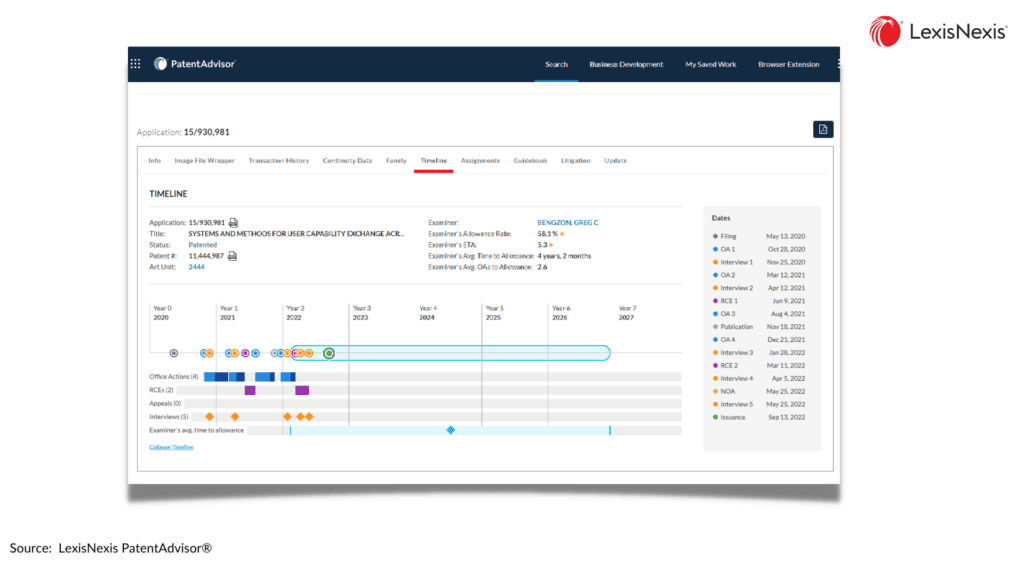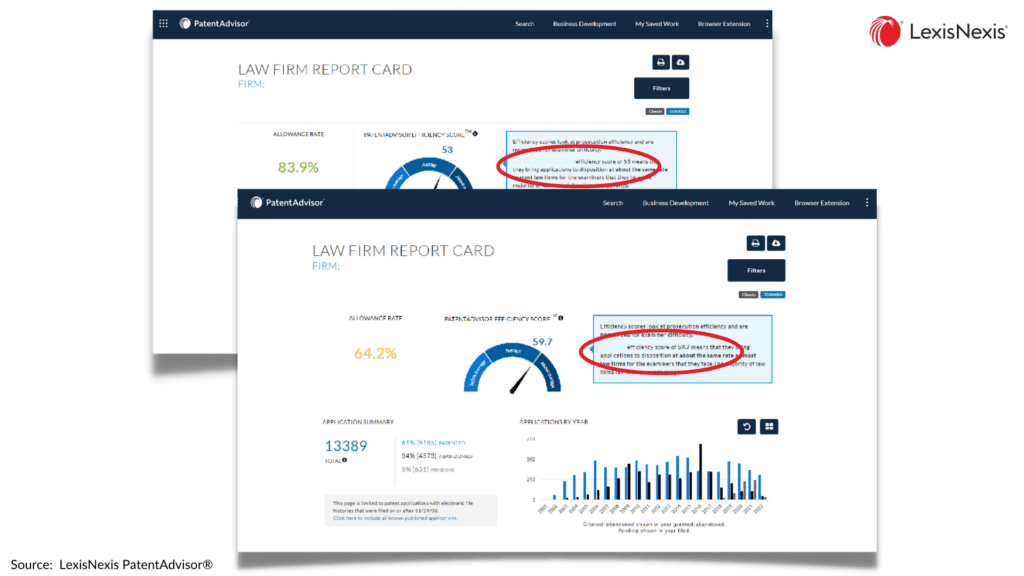How Insights From Prosecution Analytics Can Facilitate Attorney/Client Relationships

Learn from the experiences of an in-house attorney at a Fortune 100 multi-national company about how to use insights from prosecution analytics to build relationships and manage client expectations as an outside counsel.
Great discoveries and improvements invariably involve the cooperation of many minds. – Alexander G. Bell
The father of the telephone had an important message in these words. This sentiment holds true when it comes to corporate law and the relationship between in-house and outside counsel (OC). As in most relationships, it’s not always easy to get to the point of collaboration and seamlessly work together to reach a goal. And when it comes to patent law, this collaboration is critical in the pursuit of being innovative and protecting some of the world’s most revolutionary inventions.
We asked an experienced Fortune 100 in-house attorney, Ben Hoopes, to shed some light on the critical strategies outside counsel can use to develop a successful relationship with their corporate/in-house counterparts. Read on to learn more about:
- Keys to establishing a good relationship between in-house and outside counsel
- How insights from prosecution analytics can facilitate the attorney/client relationship
Keys to establishing a good relationship between in-house and outside counsel
Communication – At its core, being an attorney means you work in the service industry. The best practice here is to tailor your services and approach to the client’s unique needs. Communicating with a client who manages a small portfolio should be different than with the portfolio manager of a large multinational corporation with tens of thousands of patents. The “right” amount and style of communication is much like finding the ‘right chair’ to sit on in the famous children’s story Goldilocks and the Three Bears. Ask yourself this: Do you know which chair (read communication style) is “just right” for your clients?
Subject matter capability – First and foremost, don’t be afraid to ask questions. From experience, this is where most attorneys slip up, assuming that we understand something when there’s a technical disconnect. Portfolio managers tend to be willing to spend time on the phone with a new OC to help bring them up to speed. By doing that, the in-house counsel invests in a relationship while reducing strain on their inventors.
Proactivity – An excellent way to inspire confidence in your capacity as an efficient OC is by considering the downstream impacts of your strategy up-front. Make it a practice to ask yourself, “what’s next.” Advanced solutions like LexisNexis PatentAdvisor® can help you get insights from prosecution analytics on what to expect and how to proceed. For example, examiner analytics, which includes LexisNexis® proprietary measure PatentAdvisor ETA™ (Examiner Time Allocation) for examiner difficulty, can tell you your chances of success for almost all tricky procedural situations—whether to interview or to appeal, etc. Knowing that the examiner has a high ETA and a high probability of success on appeal, allows you to consider getting the claims in condition for appeal at the first office action.
This is the kind of proactive behavior expected by portfolio managers. Rather than just following a default approach, if the OC considers the examiner trends to offer a well-thought-out game plan that gets the client to allowance as quickly and efficiently as possible, everyone wins.
For a sophisticated, established company, be aware that portfolio managers will likely pay attention to the procedural posture of the case and will press for recommendations that make sense. For instance, does it still make sense to continue to push and argue with the examiner after a Request for Continued Examination (RCE) that did not move the needle? Analysis like the one below lets you figure out a case’s procedural posture.

Proofreading – Don’t (ask) make the inventors/in-house attorneys (to) be your proofreaders. It’s as easy as that.
Use data to gain “extra credit” as an outside counsel
Distinguish yourself by quickly getting a ‘yes’ or getting a faster allowance efficiently. This means getting an invention patented within an expected and reasonable number of responses for a given examiner without giving up unnecessary subject matter.
This is also where a tool like PatentAdvisor proves its worth as an integral supplement for your decision making process. To differentiate between examiners, PatentAdvisor uses more than just the allowance rate of each. Instead, it uses a proprietary algorithm that puts examiners into buckets: green, yellow, and red.
Attorneys can use insights from patent analytics to further compare law firms, individual attorneys, and corporations on a level playing field. For instance, within a given art unit, we can compare a handful of law firms and see how well they do, respectively, against red, yellow, and green examiners.

There’s one law firm with good efficiency over a 5+ year window. Still, if you zoom in on five years, that firm has skyrocketed in efficiency—and it’s because they have embraced data (amongst other things) and are actively using it to be more efficient.
Going into client meetings already knowing and understanding the cross-section between their technology plans, business plans, and IP strategy sets you apart from other transactional attorneys and raises your position to be a strategic partner. Understanding how the business positions itself to succeed will take you a long way.
Take Microsoft, for instance. Microsoft CEO Satya Nadella led a change in focus on the cloud. So, if you were counsel for Microsoft, engaging with your client to figure out how you can build a patent portfolio to protect that space would be a great way to show them that you are a business partner and not just a service provider. The kinds of patent applications you draft and how you prosecute those applications will change when you approach them with an understanding of corporate goals.
Leverage technology solutions and insights from prosecution analytics to improve your prosecution strategy
Understanding the data behind prosecution will boost your strategy. Attorneys can easily get lost in the weeds if they are not using data and insights from prosecution analytics to guide decisions. Sometimes, simply pointing out the law and moving on might not be the solution. If you can see that an examiner shows a higher tendency to reverse decisions after interviews, then it is evident that your next step should be to set up a call and clear the issue to lead your application to a grant. There are many similar use cases for leveraging prosecution analytics to help form your strategy. As an OC it is important that you take advantage of the insights from modern prosecution analytics solutions to ensure you are advising your clients to make the right calls. Apart from that, showing up for initial client discussions with an understanding of their existing patent prosecution challenges will definitely set you apart from the competition and help build a trusted relationship. LexisNexis PatentAdvisor is the market-leading examiner analytics and predictive prosecution platform enabling transparency, certainty, and improved prosecution outcomes. We provide curated insights to help make effective decisions, benchmark prosecution performance, and support the patent professionals’ transition to a strategic business partner.
Learn how you can navigate the complex and unpredictable US patent prosecution process by leveraging our prosecution analytics solutions.
Get advanced analytics right were you work – on the USPTO Patent Center and Private PAIR websites, with the PatentAdvisor browser extension.

Access reliable examiner statistics directly in the USPTO’s PAIR and Patent Center
Get immediate access to the most essential examiner and art unit statistics directly on the USPTO’s websites with the free PatentAdvisor Extension.
